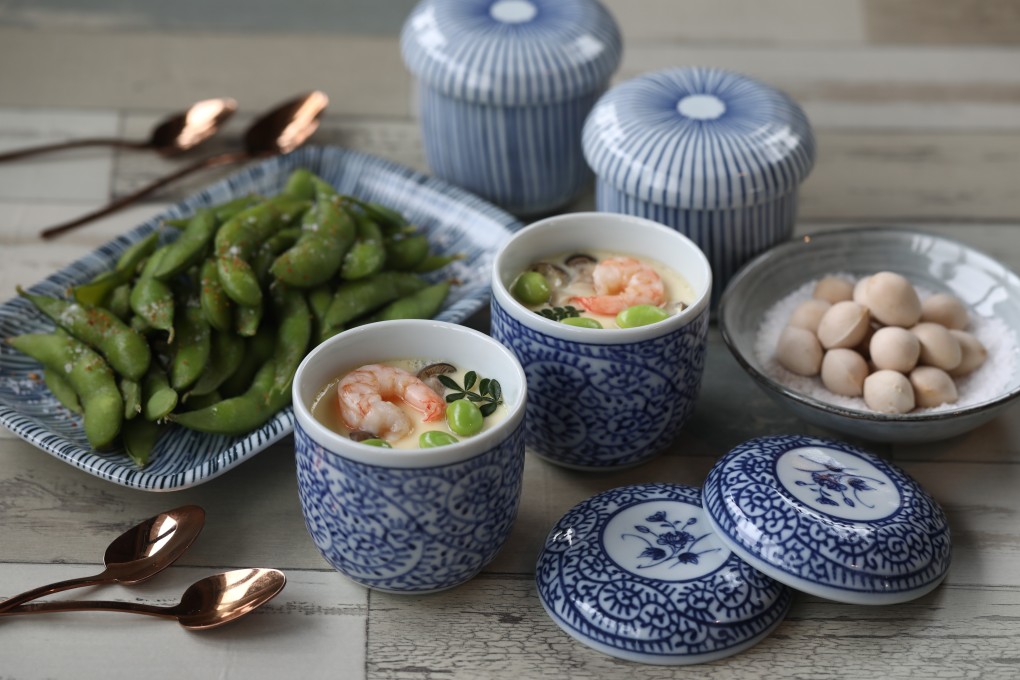How to make chawanmushi – steamed savoury Japanese custard
- This delicate and elegant dish is surprisingly easy to make at home
- Flavour with edamame, shrimp, ginkgo nuts and a sprig of kinome leaves

Chawanmushi is an elegant, delicate savoury steamed custard often served at Japanese restaurants, but it’s also easy to cook at home. It gets its name because the custard mixture and other ingredients are poured into teacups (chawan) before being steamed.
Don’t use the elegant bowls reserved for tea ceremonies, because those are too large. At Japanese department stores, you can find special chawanmushi cups with lids, but if you don’t have them, regular teacups (preferably straight-sided ones without handles) that hold about 200ml each will do; you’ll need to cover them tightly with foil, so the condensation from the steamer doesn’t drip in.
Chawanmushi with shrimp, ginkgo, edamame and shimeji mushrooms
You need a special type of white soy sauce for chawanmushi. It’s not actually white, but it is very pale in colour – about the shade of mirin. Don’t use light soy sauce as it will turn the custard mixture an unpleasant greyish-brown. If you can’t find this white soy sauce, mix in some salt, instead.
Dashi bags look like tea bags, and need only to be soaked in boiling water to make a flavourful stock. Buy the type that contains katsuobushi (dried skipjack shavings) and kombu (sea kelp).
Edamame pods are sold raw and fresh, or cooked and frozen. The latter are easier to use – they just need to be thawed. If using fresh edamame, trim off the ends, then cook the pods in boiling salted water until done before draining, rinsing with cold water and draining again.
Kinome is a plant that belongs to the prickly ash family and is related to the Sichuan pepper. The plant has small leaves that are dried to make sansho powder. The fresh leaves – sold on short stalks – are available in the produce section of Japanese supermarkets. If you can’t find kinome, just leave it out.
